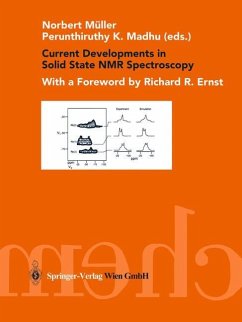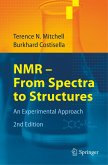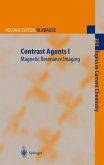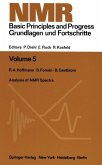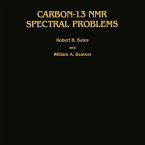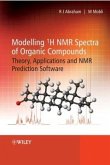This book presents some of the latest developments in solid state NMR with potential applications in both materials and biological science. The main emphasis is on a strong link between theory and experiment via numerical simulation of NMR spectra which play a pivotal role in the design and development of pulse schemes in solid state NMR. The papers focus on non-biological topics of solid state NMR spectroscopy making the book useful for scientists and advanced students in chemistry, physics, and materials science striving for deeper understanding of this topic and its application potential. Three invited reviews focus on developments in solid state NMR of quadrupolar nuclei, which are of high interest in areas like materials science and heterogeneous catalysis.
Why to apply solid-state NMR? - By now, we should have learned that NMR is mainly used for the study of molecules in solution, while x-ray diffraction is the method of choice for solids. Based on this fact, the two recent 'NMR-Nobelprizes' went indeed into the liquid phase: my own one eleven years ago, and particularly the most recent one to Kurt Wuthrich. His prize is beyond any doubts very well justified. His contribution towards the study of biomolecules in solution, in their native (or almost native) environment is truly monumental. We all will profit from it indirectly when one of our future diseases will be cured with better drugs, based on the insightful knowledge gained through liquid-state NMR. Two fields of NMR are still left out of the Nobel Prize game: magnetic reso nance imaging (MRI) and solid-state NMR. The disrespect for MRI in Stockholm is particularly difficult to understand; but this is not a subject to be discussed at the present place. Solid-state NMR is the third of the three great fields of NMR, powerful already today and very promising for the near future.
Why to apply solid-state NMR? - By now, we should have learned that NMR is mainly used for the study of molecules in solution, while x-ray diffraction is the method of choice for solids. Based on this fact, the two recent 'NMR-Nobelprizes' went indeed into the liquid phase: my own one eleven years ago, and particularly the most recent one to Kurt Wuthrich. His prize is beyond any doubts very well justified. His contribution towards the study of biomolecules in solution, in their native (or almost native) environment is truly monumental. We all will profit from it indirectly when one of our future diseases will be cured with better drugs, based on the insightful knowledge gained through liquid-state NMR. Two fields of NMR are still left out of the Nobel Prize game: magnetic reso nance imaging (MRI) and solid-state NMR. The disrespect for MRI in Stockholm is particularly difficult to understand; but this is not a subject to be discussed at the present place. Solid-state NMR is the third of the three great fields of NMR, powerful already today and very promising for the near future.

